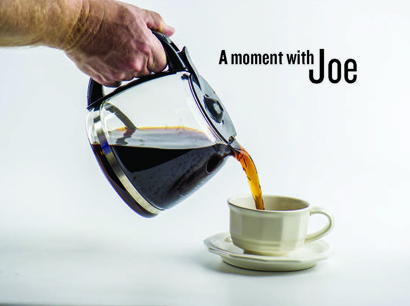I recently came across a copy of the suburban weekly news-paper for the Los Angeles suburb of Paramount. The front page of the Paramount Journal reinforces what the rest of the industry is thinking. Those of us in the newspaper industry think of Paramount for more than the Paramount Journal. Because the contraction of daily newspapers in the 1990s preceded Internet news and because community newspapers are not suffering the declines in circulation which have afflicted the dailies, one reason for the loss of daily newspaper readers is that community newspapers are providing the content suburban readers desire. What is important enough to be front-page news in a suburban weekly is often too regionally insignificant to be covered in the metropolitan daily. “Community newspapers” doesn’t necessarily refer to geographic communities. Some publications serve ethnic or religious communities and are distributed regionally. Many of those are published every other week or every month rather than weekly, but the instantaneity of the Internet as well as the Web’s international access haven’t dampened interest in such print media. “Community” could also refer to interest community, and these papers which serve readers’ lifestyle, hobby, or other interests are also not suffering. I have heard print newspapers compared to the buggy whip. Al-though many buggy whip manufacturers have indeed gone out of business, when I hear about the total demise of buggy whips I wonder how I passed my history classes because I have no recollection of the total disappearance of the Amish. The niche market almost always ensures a place for what no longer serves the mass market. The best example of utilizing the niche market after new technology has made a product no longer feasible for the mass market involves the city of Paramount. The proliferation of home refrigerators with freezer systems meant an end to the sales of produced block ice. A certain businessman in Southern California felt that a new use for his icemaking skills was needed. His name was Frank Zamboni. In 1940 Frank Zamboni turned his icemaking ability into a skating rink in Paramount. The Iceland rink still exists today. While the rink ensured Frank Zamboni’s income from icemaking even after the refrigerator ended his previous business, skate blades impacted the ice surface and the process of resurfacing the ice was laborious. Frank Zamboni solved the problem by inventing an ice re-surfacing machine. Frank Zamboni’s ice resurfacing machine is the epitome of the niche market. While fewer than 12,500 Zamboni machines have ever been sold, Frank J. Zamboni and Company has shown no indications of financial insolvency and Zamboni has extremely positive name recognition. It is doubtful that any readers of this have a Zamboni machine in their garage, and it is even more doubtful that the readers’ refrigerators have a Zamboni product inside. Instead of joining the new technology, Frank Zamboni applied his old technology to a niche market. If the Internet is a refrigerator, the newspaper journalist is a Zamboni driver. When I saw the Paramount Journal, the first thing I noticed was a photo of the Skater of the Week on the front cover. According to the criteria the Skater of the Week can be an ice skater, a roller skater or a skateboarder. While this doesn’t restrict the Paramount Journal to covering the Iceland rink, the particular photo I saw was of an ice skater. The prominent positioning of the Skater of the Week reinforces the association of Paramount with Iceland. The Paramount Journal is serving its readers with the Skate of the Week photo. It is also serving a subtle notice that the Paramount Journal and its niche market counterparts will survive what is afflicting the mass market.













